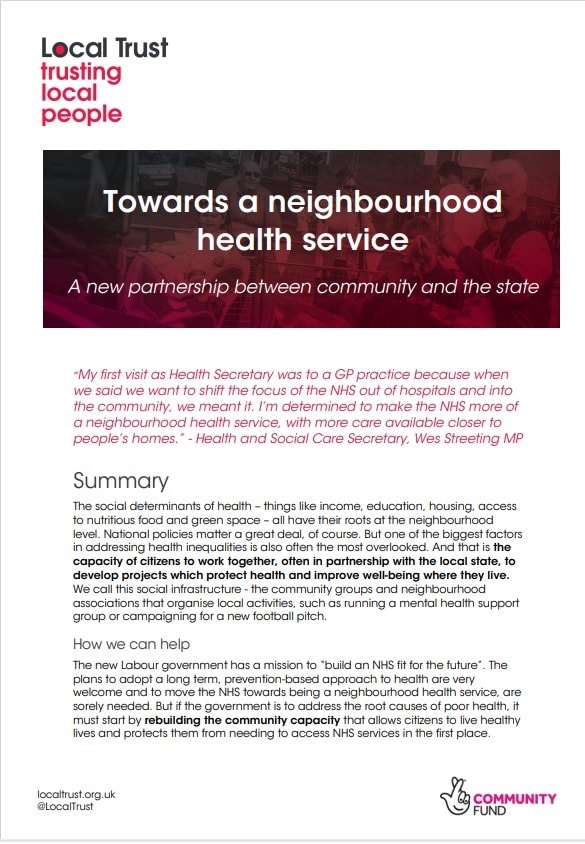Towards a neighbourhood health service
This paper looks at health disparities at the neighbourhood level and what can be done to help, as part of our series, 'Making the government's missions work in neighbourhoods'.

This paper looks at health disparities at the neighbourhood level, offering five key policy recommendations the government can take to improve health outcomes and shift towards prevention and a neighbourhood focused health service.
In 2010, the UK government commissioned a study into health chaired by Sir Michael Marmot. The result – the Marmot Review – was a comprehensive analysis of health disparities in England. It found that people living in the poorest neighbourhoods die on average seven years earlier than those in the wealthiest. “The link between social conditions and health,” it argued, should be “the main focus” of the UK’s healthcare system (Marmot, 2010).
This problem is widely recognised at a national level. But until now we have had a very poor understanding of health disparities at the neighbourhood level. By this we mean residential areas of around 10,000 people or fewer.
There has also been too little study of what can be done to help. This paper fills that gap and makes five key policy recommendations the government can take to improve health outcomes.
It forms part of our series of short papers, ‘Making the government’s missions work in neighbourhoods’. The series explores how learning from the Big Local programme can inform the delivery of the new Labour government’s five missions, and where these could have the greatest impact – at the neighbourhood level. These missions span policy across health, economic growth, education, crime, and energy.



